Torraccia del Piantavigna makes its wines from three grape varieties which are traditionally grown in the Novara Hills: Nebbiolo, Vespolina and Autochthonous single grape variety as specified for our DOC wines.
NEBBIOLO
Nebbiolo is the grape variety most often identified with Piemonte, a variety that accounts for less than 1% of the vines in Italy. Despite its limited distribution, due to it being quite difficult to grow, having a relatively low yield and not adapting well to many soils and climates, Nebbiolo wines have been consistently among the most highly-prized. Of the 50 top wines in the Best Italian Wine Awards of 2014, 20 were from the Nebbiolo grape. Although present throughout Piemonte, it appears that the origin of the variety was indeed the northern area of Piemonte, known as Alto Piemonte. By the 19th century, it was the predominant variety in the area.
The most plausible origin of the name would appear to be from the word nebbia (fog), due to the late harvest which coincides with the first autumn mists.
This is a slow-growing vine which is the first to blossom in the spring and the last to lose its leaves in the autumn. This characteristic makes it more vulnerable to variations in the climate (early frosts and late rains), but this long season also means maximum exposure to light, favouring the development of complex flavours and aromas. It is this high concentration of complex sugars, acids and polyphenols that make it suitable for wines intended for long ageing.
At the time of harvest the bunches are compact, of above-average size and pyramid-shaped. The grape is quite small round or slightly oval with a firm, relatively thick skin.
Torraccia del Piantavigna is one of the two companies which, for historic reasons, can vinify both Ghemme and Gattinara, the two D.O.C.G.’s of Alto Piemonte, located only a few kilometres from one another, but on opposite sides of the River Sesia.
Although Nebbiolo is better known for the wines of Barolo and Barbaresco, the Nebbiolo wines of the Colline Novaresi (as the the hills north of Novara are called) are universally recognised for their elegance and delicacy.
VESPOLINA
Vespolina is the ultimate indigenous grape variety. Its origins appear to be from Piemonte and, more particularly, the area around Gattinara, where it has been grown since ancient times. The word Vespolina derives from its sweetness and the delicate skin which attracts wasps (vespe) since they can easily extract the sweet juice.
Of average size, the bunch is compact, long and conical in shape. The grape itself is vaguely oval with a very delicate skin that is dark bluish, almost black, with a white waxy bloom. This variety is harvested relatively early, towards end of September, and needs a lot of sun but cool soil that is not subject to excessive dryness. It is a delicate variety, and difficult to harvest successfully, as the time is extremely short between the grapes reaching maturity and the bunches withering and dropping to the ground. Once Vespolina was the most common variety in the valley but now there are only some 100 acres of Vespolina. This decline is more due to the difficulty in growing it than in the characteristics of the grape itself. In a world where yield and ease of production is everything, there is little place for vines such as Vespolina. Torraccia, with some 15 acres, is almost certainly the largest producer of this unique varietal.
In fact, Vespolina gives rise to an intriguing wine, rich in aromas of red fruit, pepper and other spices and wild berries. On the palate it is vinous, with full, fresh flavours that fill the mouth with good solid wine character, backed up with strong tannins. It is the pepper note which is probably its most unique characteristic, with the highest concentration of ‘rotundone’, the principle component of the pepper aroma, of any Italian wine.
AUTOCHTHONOUS SINGLE GRAPE VARIETY
This is a very old variety whose origins appear to be from the area around Turin, although many claim that its roots lie further afield. The name “Greco”, by which it is known in the area around Novara, stems from the Greco of Campania in Southern Italy, with which it shares some genes. Today it is grown in many parts of Piemonte, around Turin, Ivrea, Biella and Novara, where it is used for wines such as the outstanding Erbavoglio from Torraccia del Piantavigna.
Of medium size, the bunch is compact and elongated with relatively large, round grapes. The skin is a matt yellowy-green, which becomes golden at full maturation. The harvest is relatively early, normally in the middle of September.
Autochthonous single grape variety as specified for our DOC wines is considered to be “the most red of the white wines” in that it has taste characteristics that are strong and intense. The aromas are more subtle and go from white to citrus fruit, rounded off by herbal notes such as mint and freshly-cut hay.
It is also a highly versatile variety, well suited for still wines but also fine sparkling wines and passitos.
Unfortunately we are not in a position to use the name Autochthonous single grape variety as specified for our DOC wines on the label, as the sole rights to use the variety have been granted to the area of Caluso. The other name for the grape, Greco, can also not be used, as it has been attributed to other areas in the south of Italy. This despite the fact that Autochthonous single grape variety as specified for our DOC wines is specified as the only white grape allowed for D.O.C. Colline Novaresi wines. We therefore find ourselves in the absurd situation of not being able to name the grape variety that we are obliged to use and which has been planted in our valleys for hundreds of years.







